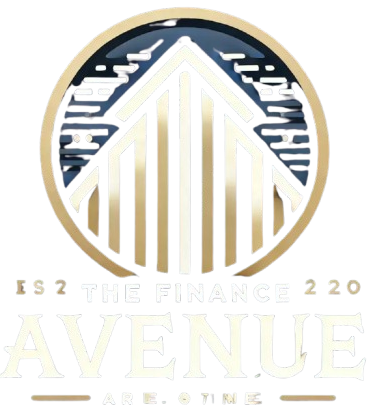Fidelity Go Review
Category
Categories

Our Analysis
Introduced in 2016, Fidelity Go offers an easy-to-use automated investment management service designed for passive investors, newcomers, and current Fidelity customers. The emphasis is on a simple portfolio decision-making process to deliver a direct investment solution. Investors using Fidelity Go can access the extensive resources of Fidelity, a leading global brokerage firm.
In 2024, Fidelity Go saw advantages stemming from Fidelity’s overall fund universe expansion and specific enhancements to the robo-advisor platform and dashboard. Additionally, Fidelity Go’s dashboard now features a financial wellness section that directs users to available tools and offers unlimited one-on-one coaching with an advisor for clients holding over $25,000 in assets. For accounts under $25,000 without fees, Fidelity Go’s entirely digital method enables users to efficiently set goals and begin investing promptly by selecting from a limited menu of portfolio allocations after completing the onboarding process. We will delve deeper into Fidelity Go’s robo-advisory service to determine if it aligns with your investment objectives.
Important
In addition to our assessment of Fidelity Go, we have also evaluated Fidelity’s standard brokerage offerings.
Pros & Cons
Simple registration process
Affordable management costs and free fund options
Ability to assess and modify portfolio risk prior to depositing funds
Smooth integration for current Fidelity clients
Lack of tax-loss harvesting feature
Restricted selection to only in-house mutual funds
Human advisors only available for accounts exceeding $25,000
Account Overview
When it comes to managing your finances, having a clear account overview is essential. This summary provides a snapshot of your financial situation, including your assets, liabilities, income, and expenses. By regularly reviewing your account overview, you can track your progress towards your financial goals and make informed decisions about your money.
Having a comprehensive account overview allows you to see the big picture of your finances. It helps you understand where your money is coming from and where it is going, allowing you to identify areas where you can save or invest wisely. Additionally, by analyzing your account overview, you can detect any red flags, such as excessive spending or debt accumulation, and take corrective action to improve your financial health.
In conclusion, regularly reviewing your account overview is a crucial step in managing your finances effectively. It provides you with valuable insights into your financial standing, enabling you to make informed decisions and achieve your long-term financial goals.
Account Creation Process
Fidelity Go offers a simple and guided approach to setting up your account. To begin, you will be asked to choose a savings goal – either retirement or another objective. Following this, a brief series of inquiries regarding your investment horizon, risk tolerance, and financial details will be presented. Subsequently, a suggested portfolio alignment based on your input will be provided. Should you wish, there is also an option to modify the risk level of the portfolio.
Subsequently, you will need to select the type of investment account to open. Fidelity Go offers a limited selection, including taxable accounts, traditional individual retirement accounts (IRAs), Roth IRAs, rollover IRAs, and health savings accounts (HSAs). You will also be required to select a funding method, which encompasses linking your bank account, transferring cash or securities, or making a deposit via check. While there is no minimum deposit necessary to open your account, a $10 minimum is required before your funds are invested.
Goal Planning
When you create your account with Fidelity Go, you have the opportunity to establish savings goals. While each account is limited to one goal, you can create multiple accounts with different objectives based on your financial needs. The initial investment goals focus on retirement, major purchases, and general investing, but there are additional goal-setting choices available through Fidelity Go’s broader platform partnerships.
One key advantage of Fidelity Go is its connection to a range of financial tools and goal-setting options within the Fidelity suite. For instance, the Full View tool, a separate offering that can be integrated with Fidelity Go, provides more comprehensive financial planning capabilities. This tool allows you to link external financial accounts, such as 401(k) workplace retirement plans, for a more holistic approach to goal planning. This integration enables users to access all their financial accounts in one place to assess their overall financial well-being.
If you are seeking goal planning along with personalized guidance, Fidelity Go offers a tailored planning and advice platform that delivers a hybrid money management experience. By investing a minimum of $25,000 with an annual fee of 0.35%, you can access financial coaching, professional money management services, and more dynamic financial planning strategies.
Fidelity Go’s Platform Challenges
Fidelity Go, now known as Fidelity Go, offers platform challenges to motivate users to reach their financial goals more quickly. One of these challenges is the 52-week challenge, where customers gradually raise their contributions over a year to boost their investment portfolio’s growth. Users can configure the challenge so that The Finance Avenue automatically boosts their weekly transfer by $1 each week until it hits $52 in the last week.
Account Services
Fidelity Go’s focus is on helping individuals achieve their investment objectives in taxable accounts, IRAs, and HSA accounts. Their deposit process incorporates a tool to assist users in determining the optimal balance for contributions across various accounts while staying on target to meet their goals. Deposits are automatically invested in portfolios that best suit the user’s timeline, eliminating the need for individual trades, stock selection, or market timing.
These functionalities highlight Fidelity Go’s platform as being tailored towards a simplified portfolio and planning solution for saving towards typical, uncomplicated goals. Consequently, the platform offers limited investment account features, with options like margin, loans, credit, spending, and banking services not being available through Fidelity Go but accessible through other Fidelity platforms.
Cash Management
Fidelity Go offers a cash management solution within Fidelity Go. Cash not invested in your account is automatically transferred to the Fidelity Government Cash Reserves fund, potentially providing a higher return than a standard bank deposit account. Currently, the yield stands at 4.08%. While there is no direct spending option within Fidelity Go, all users have the opportunity to access the Fidelity Rewards Visa Signature card, which offers 2.0% cashback rewards. Though not directly linked to Fidelity Go, this card showcases the platform’s advantage of being part of the broader range of Fidelity products.
Portfolio Construction
Fidelity Go’s portfolios are constructed using exclusively Fidelity Flex mutual funds, which have zero fees. These funds offer 14 pre-built portfolio allocations based on individual circumstances, goals, and time horizon, covering investments in bonds, short-term assets, domestic, and foreign asset classes. The allocation ranges from 20% equity and 80% bonds for the most conservative portfolio to an all-equity allocation for the most aggressive one.
The portfolio strategy primarily follows a passive approach, aiming to mirror overall market growth while considering an investor’s risk tolerance. While this strategy provides a solid foundation, it may limit opportunities by solely relying on Fidelity funds and not incorporating other asset classes. Additionally, investors interested in socially responsible investing may find the lack of a dedicated portfolio for this strategy disappointing.
The Finance Avenue does not offer exposure to cryptocurrencies or any assets beyond its Fidelity Flex funds.
Types of Assets to Consider
When looking to invest, it’s essential to consider the different types of assets available. These can include stocks, bonds, real estate, commodities, and more. Each asset class comes with its own set of risks and potential returns. Diversifying your portfolio with a mix of assets can help spread risk and optimize returns. Understanding these various assets is crucial for making informed investment decisions.
Portfolio Management
Fidelity Go employs the strategy of rebalancing to maintain the desired risk level of your portfolio, adapting to market changes over time. Rebalancing occurs when the investment allocation deviates beyond specific thresholds, prompting a reallocation of funds back to the original risk level of the portfolio. This process is automated by Fidelity Go, with no option for manual rebalancing, although adjustments to the portfolio risk level can be made at any time.
In addition to rebalancing, tax optimization plays a crucial role in investment. While Fidelity Go does not provide tax-loss harvesting, it does allocate tax-advantaged funds, like municipal bonds, into taxable accounts to improve the tax efficiency of the portfolio over time.
Another beneficial feature offered by Fidelity Go involves regular updates on goal progress, both monthly and annually, enabling investors to track their financial achievements as their circumstances evolve. Additionally, users have the option to link external investment accounts for a comprehensive overview of their financial status, although these external accounts are not factored into Fidelity Go’s planning calculations.
Fidelity Go’s Risk Management
One significant enhancement in risk management by Fidelity Go is in adjusting the portfolio as the target date nears. The introduction of Smart Shift allows for a shift to a more conservative allocation as the target date approaches. It is currently an opt-in feature for users.
User Experience
Fidelity Go emphasizes the importance of user experience in the financial industry. It is crucial for financial service providers to prioritize user-friendly interfaces and seamless interactions to enhance customer satisfaction. By focusing on user experience, companies can build trust with their clients and differentiate themselves in a competitive market. Good user experience leads to increased customer loyalty and retention rates, ultimately contributing to the overall success of a financial business.
Desktop
Current Fidelity customers will recognize the layout of Fidelity Go’s desktop version, Fidelity Go. The platform retains a sense of familiarity but offers fewer tabs and tools compared to other Fidelity platforms. Navigating through onboarding, account management, performance, and money movement screens is straightforward. However, new investors may require some time to adapt, as the site appears to be an extension of the original Fidelity brokerage offering. Despite this, Fidelity Go delivers a user-friendly experience.
Mobile
Fidelity Go offers a mobile app called Fidelity Go, which is integrated into the main Fidelity app for both iOS and Android devices. The mobile app provides a similar user experience to the desktop version, allowing users to receive push notifications and prompts based on their preferences. New investors using Fidelity for the first time should explore the various services available on the app, as it may take some time to familiarize themselves, especially if utilizing multiple Fidelity platforms simultaneously. For instance, while Fidelity Go is accessible within the main Fidelity app, Fidelity Bloom has its separate app.
Customer Support
Fidelity Go caters to users who prefer digital interactions, and its customer service reflects this focus. The platform offers a comprehensive FAQ page and a virtual assistant to address common queries. For more personalized assistance, users can access live chat support and phone lines staffed by human representatives. It’s important to note that access to human financial planners is limited to accounts with balances exceeding $25,000.
Security
Protecting your investment is crucial, and Fidelity Go ensures the security of its users by leveraging features from the broader Fidelity Go platform. Two-factor authentication and biometric entry options are available, providing added security measures for your account. Additionally, Fidelity Go is backed by the SIPC, safeguarding your funds in case of financial instability within the brokerage.
Education
A significant advantage for users of Fidelity Go is the access to a wide range of educational resources offered by the platform. These resources cover various investment subjects, cater to different experience levels, and are available in various formats such as articles, videos, podcasts, commentary, and courses. The educational content is regularly updated to reflect the changing financial environment. By utilizing Fidelity Go, users can enhance their understanding of robo-advisors and expand their investment expertise at their own pace.
Commissions and Fees
Fidelity Go utilizes a tiered pricing system to calculate fees. The initial $25,000 is managed at no cost, and the Fidelity Flex funds do not incur fees, making the service free for individuals with low balances. For accounts exceeding $25,000, an annual fee of 0.35% is applied. This competitive pricing model stands out, particularly due to the absence of continuous mutual fund fees, allowing users to retain more of their funds.
The Bottom Line
Fidelity Go, is a compelling choice for both existing Fidelity customers and new users seeking a reputable robo-advisor. With competitive fees, a range of financial tools, and educational resources, Fidelity Go is a standout option in the industry. The platform is free for balances up to $25,000, and thereafter charges just 0.35% annually with no-fee mutual funds in its portfolios, making it cost-effective for investors with lower balances. Additionally, once the balance exceeds $25,000, users gain access to a financial advisor at no extra charge.
However, investors seeking more customization, diverse investment options, and socially responsible offerings might not find Fidelity Go to be the ideal fit. The absence of tax-loss harvesting could also be a concern for those with sizable taxable accounts. Despite these limitations, Fidelity Go remains a strong choice for many investors. It’s worth mentioning that resources like Fidelity Bloom, though not part of the Fidelity Go program, are valuable offerings that can benefit Fidelity Go customers as well.
How Can Fidelity Go Help You Save Money on Taxes?
Fidelity Go does not offer tax-loss harvesting, a strategy where its algorithm identifies opportunities to realize losses to offset gains in the portfolio. When it comes to tax savings, Fidelity Go’s methodology focuses on investing in tax-advantaged options within taxable accounts. For instance, it may opt for municipal bond funds instead of corporate bonds to allocate bonds in the portfolio.
What is the Price of Fidelity Go?
Fidelity offers Fidelity Go at a great value. Accounts with less than $25,000 are not charged the 0.35% management fee, and there are no management fees or expense ratios for the underlying Fidelity Flex Funds. Unlike many robo-advisors that have both a management fee and underlying expense ratios for their ETFs, which can impact returns, Fidelity Go only has the 0.35% fee once the account surpasses $25,000. This is the sole cost associated with Fidelity Go.
How We Selected the Top Robo-Advisors
Fidelity Go prioritizes delivering impartial and thorough assessments of digital wealth management firms, commonly referred to as robo-advisors. In order to determine the winners of the best robo-advisor awards and rankings for 2024, we distributed a digital survey consisting of 64 questions to each of the 21 companies included in our evaluation framework. Our research team scrutinized the survey responses, gathering any missing information through online investigations and direct communications with the companies. This data collection phase spanned from Jan. 8 to Feb. 9, 2024.
Subsequently, we devised a quantitative model that evaluated each company’s performance across nine key categories and 59 specific criteria to identify the top robo-advisors. The overall star rating assigned to each company is calculated using a weighted average of these criteria.
Many of the companies reviewed for our projects generously provide our team of skilled writers and editors with access to live accounts for hands-on evaluation. This includes robo-advisor firms that granted us such access for testing purposes.
The Finance Avenue Review of the Top Robo-Advisors
Through a comprehensive data collection and review process, The Finance Avenue offers an unbiased and detailed assessment of the top robo-advisors in the market.
Investing in Digital Assets
Please note that the content provided should not be construed as a recommendation. Investing in digital assets carries significant speculative and volatile risks and is suitable for investors willing to tolerate potential losses and sharp drawdowns. Digital assets are not considered legal tender, backed by the U.S. government, or subject to FDIC insurance or SIPC protections.




